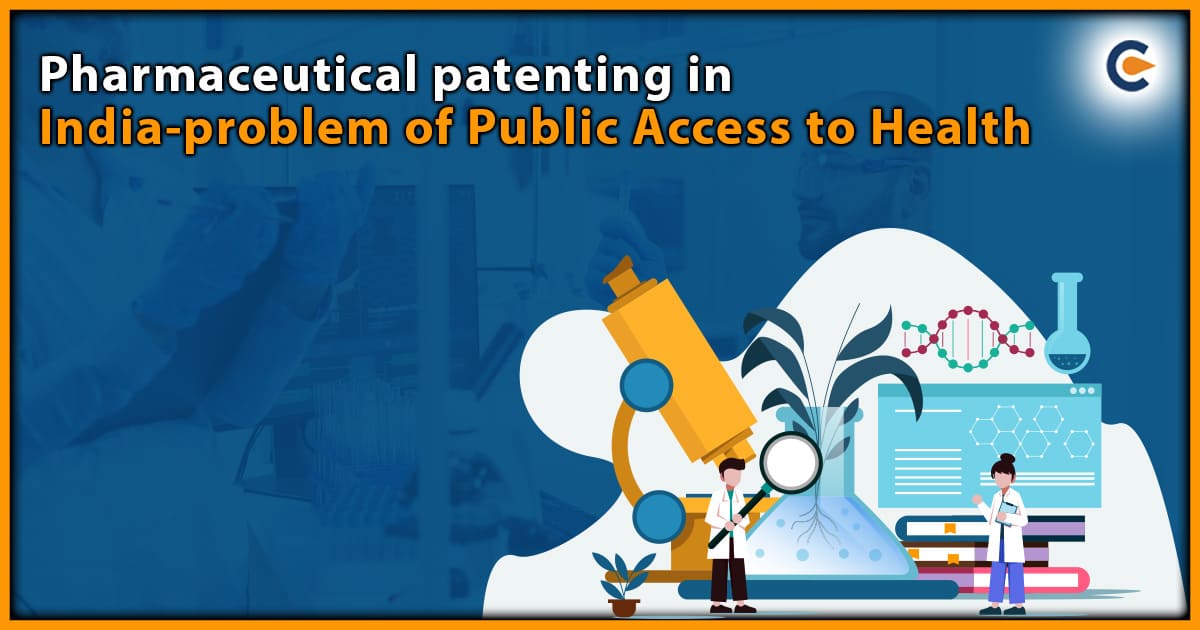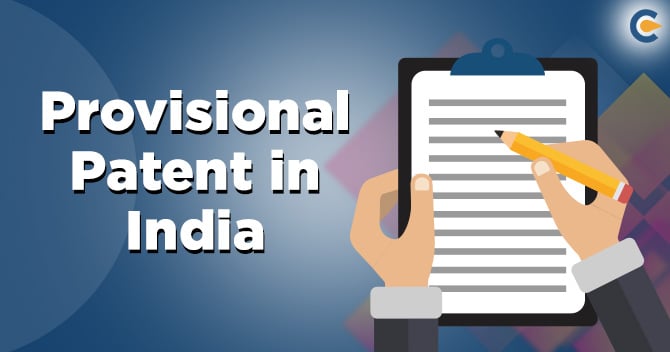Patents have played a significant role in transforming the innovation landscape both nationally and globally. They are intellectual property owned by individuals, companies, or even governments. Despite the importance of IPR, the current IPR culture in India needs to be improved. It requires more interest, knowledge, and practical strategies to encourage and promote scientific and industrial research and innovation in the country.
For a long time, India has been a leader among developing countries in trying to modify pharmaceutical patent law to meet the health needs of its people, with a focus on the common person and in line with its development goals. India is facing a healthcare crisis with inadequate accessibility, affordability, and availability of healthcare services. A large part of its population lives below the poverty line, and healthcare expenses are not covered by insurance.
The Indian patent law has a unique provision called Section 3(d), which strikes a balance between the requirements of the Trade-Related Aspects of Intellectual Property Rights (TRIPS) Agreement and the protection of access to medicine for people experiencing poverty, making India a leader in the pharmaceutical industry. The issue of access to medicines has become a global concern since India is a signatory to the Doha Declaration on TRIPS Agreement and Public Health, 2001, and its pharmaceutical companies are important suppliers of low-priced generic drugs. India has been leading the global movement for access to medicines with a thriving pharmaceutical industry that is growing in its exports, backed by the advocacy of civil society.
The recent decisions on patent law, including the Novartis case, by India’s Supreme Court indicate that India continues to prioritize public health in its pharmaceutical patent law decisions. Pharmaceutical patenting patents restrict generic competition, increase prices, and are believed to be a significant obstacle to medicine accessibility in developing countries.
Intellectual Property Rights (IPR) in India
Intellectual Property Rights (IPR) have become a critical element in modern business and commerce. IPR protects the rights of individuals and companies over their creations of the mind, giving them an exclusive right to use their intellectual property for a certain period of time. IP is a valuable asset of a company, and it encourages healthy competition in the market, enabling manufacturers, traders, and owners to develop their products more efficiently.
The output of human intelligence, commonly known as intellectual property, can be protected by exclusive rights that allow its owner to profit from their intellectual work by having a monopoly over it. However, this benefit is only sometimes a natural right but requires recognition by a statute.
The different types of Intellectual property include inventions, literary and artistic works, designs, symbols, names, and images used in business and commerce. The various Intellectual property Acts in India include The Copyright Act, 1957 , The Patents Act, 1970[1], The Trademarks Act 1999, The Geographical Indications of Goods Act, 1999, The Designs Act, 1999, Semi-Conductor IC Layout Designs Act, 2000, The Protection of Plant Varieties and Farmers’ Rights Act, 2001, and The Biological Diversity Act, 2002.
IPR plays a crucial role in modern business and commerce, as it helps to protect the rights of individuals and companies and provides an incentive to create and innovate. The various types of IPR laws ensure that creators have the legal right to their intellectual property and that they can benefit from it. These laws also encourage competition and innovation, which ultimately drives economic growth and development.
What is Pharmaceutical Patenting?
A patent is a special privilege awarded for a product or procedure that presents a novel method of doing something or offers a new technical resolution to a predicament. To acquire a patent, the technical details of the invention must be made public via a patent application.
A patent gives the owner exclusive rights to prevent others from exploiting the patented technology, including making, using or selling it. It allows the owner to recover the costs associated with developing the technology and to obtain a return on their investment.
When a pharmaceutical company develops a new drug for a specific illness, it is initially marketed under a brand name which doctors can use to prescribe the medicine to their patients.
Pharmaceutical patenting is the process of obtaining legal protection for a new drug or medicine. It is a type of patent granted to pharmaceutical companies for their innovative research in developing new drugs or medicines. Pharmaceutical patenting provides the company with the exclusive right to manufacture, sell and distribute the drug for a certain period of time, usually 20 years from the date of filing the patent application. During this period, no other company can produce or sell the same drug without the patent holder’s permission.
Pharmaceutical patenting is crucial for the pharmaceutical industry as it provides a financial incentive for companies to invest in research and development of new drugs. The patent enables companies to recoup the costs associated with research and development and to generate profits from their investment. The patent system also encourages innovation by protecting the intellectual property rights of companies that make significant contributions to the field of medicine.
Once the patent expires, other companies can produce and sell generic versions of the drug, which are usually cheaper than the branded drug. It promotes competition in the market and can lead to lower prices for consumers. However, generic drugs must meet the same quality and safety standards as the branded drug. They must have the same active ingredients, dosage form, strength, and route of administration as the original drug.
Patent Law and Pharmaceutical Patenting in India
The Indian pharmaceutical industry has a robust genetic base with over 60,000 generic brands in 60 categories. The industry’s growth was due to the absence of patent laws in the 1950s, allowing it to rely heavily on imports. It led to the development of a solid domestic pharmaceutical industry globally recognized for producing high-quality, cost-effective medicines. The industry exports over $1 billion annually, and this success is attributed to the lack of a drug patent system in the past.
The Law of Patents in India is governed by the Patents Act of 1970, which was amended in 2005 to comply with the World Trade Organization’s Agreement on Trade-Related Aspects of Intellectual Property Rights (TRIPS). The Act provides for the grant of patents for new inventions, including products and processes, that are capable of industrial application. Inventions related to drugs, medicines, and chemicals are also eligible for patent protection under the Act.
Section 3(d) of the Patent Law states that a substance is not patentable unless it is a new form of a known substance that improves its efficacy or it has a new property or method of using it. However, a known machine, device or process can be considered patentable under this section if no new product result is obtained or at least one new reactant is not introduced into the process. Many countries follow technical research guidelines and comply with the provisions of Section 3(d), which have been approved by the World Health Organization’s 2006 Report on Public Health.
However, the Act places certain restrictions on the patentability of such inventions, including limitations on the patenting of new forms of known substances, new uses of known substances, and methods of treatment. The Act also provides for compulsory licensing, which allows a third party to produce a patented product or use a patented process without the patent holder’s consent under certain circumstances. The Act also contains provisions for the revocation and surrender of patents and for the filing and examination of patent applications. The Indian Patent Office is responsible for administering the Act and granting patents in India. There are other laws that govern aspects of pharmaceutical patenting, such as the Indian FDA’s approval process for new drugs and the Competition Act, which regulates anti-competitive practices related to patents.
Why and how do Pharmaceutical Patents cause Problems in Public Access to Health?
The Indian pharmaceutical industry is a significant player in the global market, ranking fourth in production volume and comprising many pharmaceutical companies. However, there are differing perspectives on the industry’s impact on access to essential medicines both inside and outside the country. While patents are necessary for stimulating innovation, the patent system can be complicated, and pharmaceutical companies often abuse their monopoly power by charging unreasonably high prices for patented drugs. Product patents have reduced the availability of drugs, and a large number of generic medicines, including vaccines, are being patented in India, making it difficult for the industry to produce life-saving drugs.
The exorbitant pricing of drugs blocks access for ordinary people, particularly in a country like India, where a large percentage of the population lives below the poverty line and healthcare costs are excessive. It creates a significant medical-care emergency, highlighting the inadequacy of healthcare and the lack of affordability, availability, and accessibility of drugs in India. It is a crucial challenge for the Indian government, which has taken several initiatives to address the situation, such as compulsory licensing and parallel trade policies. These alternative ways help developing country governments make essential medicines more affordable to their citizens by reducing prices through competition in the market for the patented good.
To sum up, the Indian Pharmaceutical patenting plays a vital role in producing essential medicines, but the patent system often creates barriers to access. The high cost of drugs blocks access for ordinary people, creating a healthcare emergency, particularly for those living below the poverty line. The Indian government has implemented various policies, such as compulsory licensing and parallel trade, to address this challenge and make essential medicines more affordable and accessible to all.
The first benefit of this approach is that it offers an organizational structure for various pro-health measures in patent laws, which can encourage the implementation of these provisions in countries that lack them. Secondly, it raises the issue of conflicting interests between patent holders and consumers. For instance, in 1998, 4016 pharmaceutical companies contested against the South African government, claiming that the revisions made to the Narcotics and Related Substances Control Act 17 violated their constitutional rights. The revised law, which includes general alternatives to unpatented drugs, pricing transparency, and parallel imports of patented medicines, provides a legal framework for affordable medicines.
It would have been interesting to see how the court would have balanced the patentees’ property rights against their healthcare rights if the case had gone to trial. The state is constitutionally obligated to take reasonable measures to realize citizens’ right to health within its resources progressively. However, this issue remains unresolved as the case was withdrawn before trial.
Conclusion
The Indian healthcare system is failing to provide basic healthcare to the majority of its population, resulting in a gross violation of fundamental rights. The Indian patent law strikes a balance between the interests of common people and inventors. India’s implementation of the product patent regime allows for a diverse array of pharmaceutical products to be patented. Still, researchers must carefully consider patentability criteria before applying for a patent. Patented rights can be transferred through assignment or licensing, and organizations without manufacturing or marketing capacities can use patents for technology transfer. Compulsory licensing can provide an opportunity to market patented products under certain conditions. However, the monetary interests of big players in the drug industry threaten access to life-saving drugs at moderate prices in India. Innovation and patents are two sides of the same coin, and patents should not only serve to amass profits but also to serve humanity, particularly in the field of medicine.
Read Our Article: A Note On The Patent Protection For Drug Industry In India











